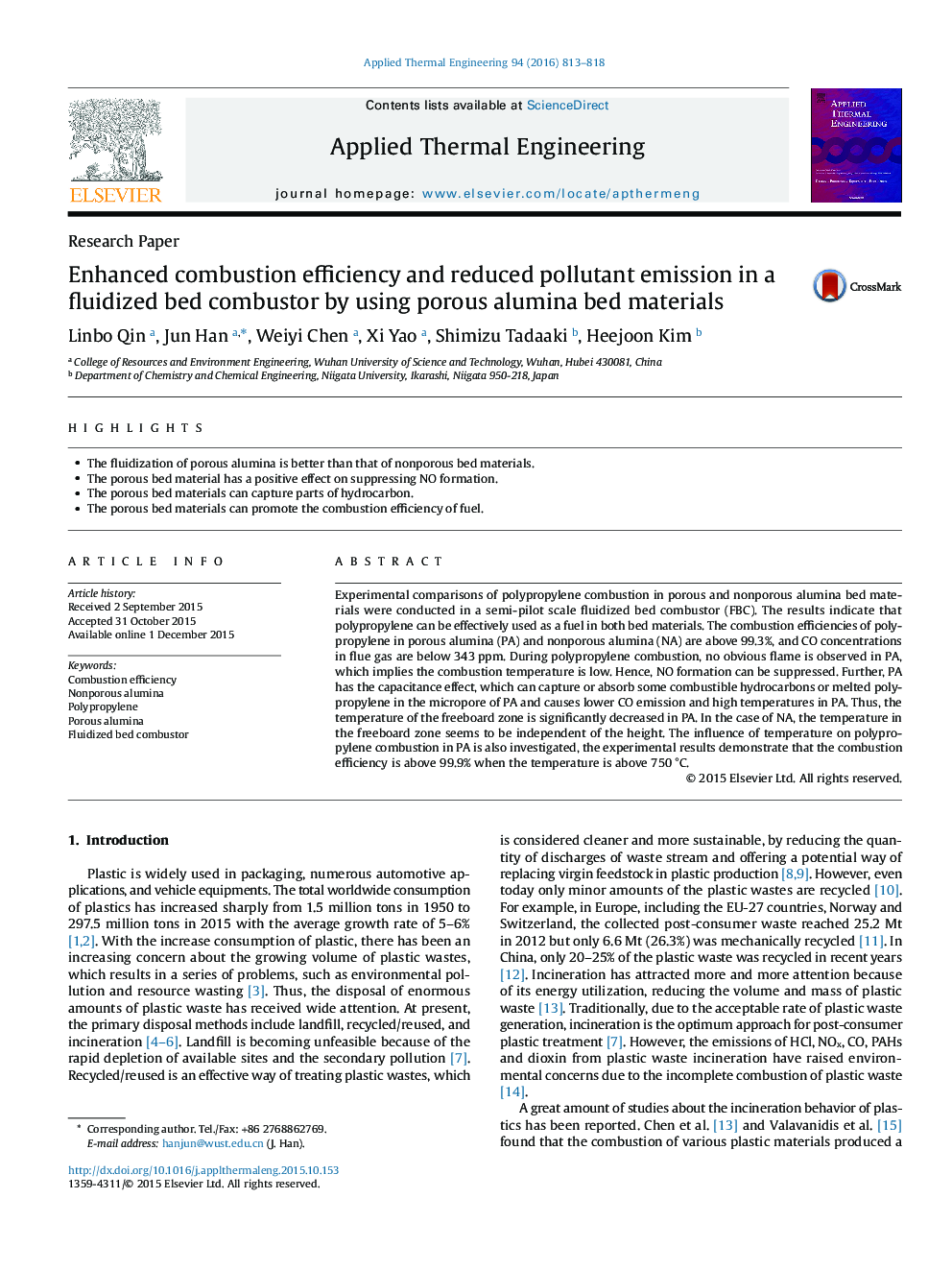| Article ID | Journal | Published Year | Pages | File Type |
|---|---|---|---|---|
| 644834 | Applied Thermal Engineering | 2016 | 6 Pages |
•The fluidization of porous alumina is better than that of nonporous bed materials.•The porous bed material has a positive effect on suppressing NO formation.•The porous bed materials can capture parts of hydrocarbon.•The porous bed materials can promote the combustion efficiency of fuel.
Experimental comparisons of polypropylene combustion in porous and nonporous alumina bed materials were conducted in a semi-pilot scale fluidized bed combustor (FBC). The results indicate that polypropylene can be effectively used as a fuel in both bed materials. The combustion efficiencies of polypropylene in porous alumina (PA) and nonporous alumina (NA) are above 99.3%, and CO concentrations in flue gas are below 343 ppm. During polypropylene combustion, no obvious flame is observed in PA, which implies the combustion temperature is low. Hence, NO formation can be suppressed. Further, PA has the capacitance effect, which can capture or absorb some combustible hydrocarbons or melted polypropylene in the micropore of PA and causes lower CO emission and high temperatures in PA. Thus, the temperature of the freeboard zone is significantly decreased in PA. In the case of NA, the temperature in the freeboard zone seems to be independent of the height. The influence of temperature on polypropylene combustion in PA is also investigated, the experimental results demonstrate that the combustion efficiency is above 99.9% when the temperature is above 750 °C.
